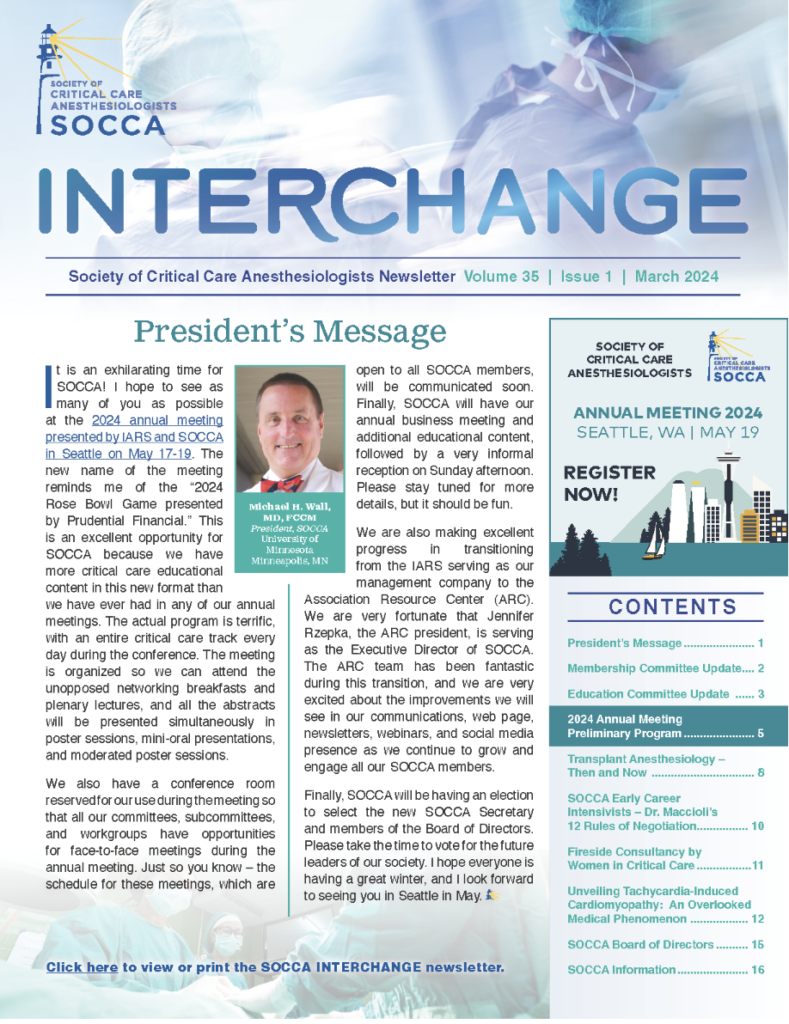A Brief Conversation with…Sean Josephs
 Dr. Sean Josephs, MD is an Associate Professor of Clinical Anesthesia at the University of Cincinnati in Cincinnati, OH. He is board certified in Anesthesiology and Critical Care Medicine.
Dr. Sean Josephs, MD is an Associate Professor of Clinical Anesthesia at the University of Cincinnati in Cincinnati, OH. He is board certified in Anesthesiology and Critical Care Medicine.
Can you briefly describe your recently published study?
Well, it’s not really a research study. It is a description of a series of steps we took as part of a quality improvement (QI) project that we undertook at the University of Cincinnati. The main project was designed to get intraoperative physician residents and faculty, as well as, nurse anesthetists and student nurse anesthetists to utilize low tidal volume ventilation during surgery. It started when one of our critical care faculty noticed that the intraoperative tidal volume was frequently set very high. We, therefore, decided to take this on as a QI project and perform it in such a way that it could be eventually published. After the project was completed we saw improvements in provider adherence to protective ventilation strategies and we were fortunate enough to be able to publish the results.
That’s fantastic! How did you implement this quality improvement project?
Our QI team used a number of improvement methods that I learned from the Intermediate Improvement Science Series (I2S2) course I completed at Cincinnati Children’s Hospital Medical Center. These included the use of statistical process control charts to track data over time and a “key driver diagram” to help guide our proposed changes. We identified several key processes, or drivers, that we thought would lead to the use of desirable intraoperative tidal volumes. These drivers included provider knowledge of the benefit of protective ventilation, provider awareness of their current deficiency in ventilator practice, and the use of technologies to change individual practice provider. Our QI team then implemented a series of interventions based on these key drivers to improve intraoperative tidal volume, including:
- Department-wide education about the benefits of intraoperative lower tidal volume ventilation during a Grand Rounds Presentation
- Creation and adoption of a Department-wide intraoperative ventilation policy
- Vocal support from the Department Chair
- Primary outcomes were periodically shared during Grand Rounds Presentations
- Changes to default ventilator settings on all anesthesia machines (600 mL to 500 mL)
Whew! That’s a lot of work. I hope you were able to demonstrate that all that hard work produced some benefit.
It was a lot of work! One of the first steps was to try to limit the data collection to a very specific subgroup of operative patients so that we could eliminate confounders that might be due to the operation or other related factors. Then, we further limited our evaluation to just 3 three time points. We recorded the tidal volume at the surgical “time out”, 1 hour after that and then 1 more hour after that. If we hadn’t limited the data collection to these points, the amount of data we could collect from our anesthesia information management system was going to be overwhelming. In the final analysis, we saw sustained decreases in the intraoperative tidal volume, as well as, the rate of failure to use intraoperative lung-protective ventilation, at all three of these time points. We believe that we demonstrated a successful QI process and approach for reducing intraoperative tidal volume.
What was the most important lesson you learned from all this hard work?
I think we learned to really nail down what we were trying to accomplish before we started any of the data collection or QI interventions. May people go into a QI project with a “pet idea” about the best way to solve a problem. QI, though, is fundamentally about the outcome…not the intervention. In this way, we started with the end goal (decrease tidal volume used) and worked from there on ideas that would lead to that end goal. We tried to have an open mind about what would work—even though I had my own ideas about what was needed. We then worked in a systematic way, monitoring the outcomes along the way trying to determine whether we were accomplishing our goal with our system changes. To this day, I’m not entirely sure which intervention made the biggest impact. We do know, taken together, our interventions led to sustained decreases in the intraoperative tidal volume in our hospital.
What, other than the QI process that you used, can we learn from your successful project?
For us, we learned that the IRB process did not have to be difficult and, in fact, I think our IRB was genuinely trying to be helpful. Even though we were planning to do a QI project, we wanted to make sure that the IRB would allow us to review patient data to assess the success of our project. Our IRB has a separate pathway to determine whether projects are “human subjects research” requiring IRB oversight. We wrote a detailed QI protocol for the IRB specifically using language and methodology supported by the SQUIRE guidelines so as to be ready for potential future publication. The IRB reviewed our project and determined it to not be human subjects research so we were allowed to proceed with the project as quality improvement work without IRB oversight. They provided us a letter of approval for our QI project which was important when we decided to publish in Anesthesia and Analgesia.
What advice do you have for fellows, junior faculty or other critical care anesthesiologists?
I think more people should look to initiate, complete and publish the results of their QI projects. Many of us are already doing QI with our trainees or for our own hospital departments or practices. It is an excellent way to promote yourself and your successes, especially if you work in an environment that is not highly resourced for traditional basic or translational scientific research. It is a great way to meld your department’s needs with your own academic productivity or interests…and it doesn’t take that much more effort to do the work in a robust enough way to get it published as either an abstract or manuscript.




































